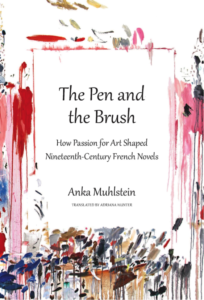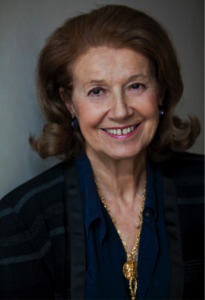By Anka Muhlstein (Guest Contributor)
I am often asked what gave me the idea of writing about the influence of painting on novels of the XIXth century. I was preparing a talk on literary society at the time of Renoir at the Frick, and I immediately thought of Proust because Proust observes how, once Renoir had been accepted as the great painter he is, all the pretty Parisian girls suddenly looked like Renoirs. The painter had literally changed the way reality was perceived. But much as I love Proust, I knew I had to enlarge the subject somewhat and I started reading up the century. I realized quickly that not one of the well-known novelists of the time – Stendhal, Flaubert, Balzac, Zola, the Goncourt brothers, Maupassant, Huysmans – fail to discuss painting or invent characters who are painters. Painting had become a central preoccupation in French literature of the time. What had sparked this interest exclusively in France? This question really obsessed me until it dawned upon me that the reason had to be the opening of the public museum, which was going to be known as the Louvre, in 1793, the most violent year of the French Revolution. Having easy access to great works by visiting a museum feels so normal to us now that we rarely think of the cultural revolution brought about by the advent of modern museums. And yet what a sea change in behavior this opportunity afforded for Parisians.
Everyone visited the Louvre, especially writers and artists—both masters and pupils. The museum attracted the inquisitive and the idle. It was warm in winter, thanks to its modern heating system; there was always something exciting to look at, and it was a respectable place to meet a lady, as she could stroll alone in the galleries without provoking comment. Most important for my purpose, writers acquired a deep understanding of painting and a common language with artists. No wonder novelists of the time tried to establish literary equivalents of pictorial achievements by taking in effect light and color. They truly invented a visual style of writing all the while dreaming up characters that allowed them to air their views on the art of the day and also depict the complex relationship between artists and the general public. There is a world of possibilities between Balzac’s genius Frenhofer, who despairs of ever convincing his fellow artists of his vision, and Proust’s master, Elstir, who has the patience to explain his art like an optician offering a myopic customer lenses of different strength until he can see clearly. At no point in history was the dialogue between painting and writing more intimate and fruitful.
 Born in Paris 1935, Anka Muhlstein has published biographies of Queen Victoria, James de Rothschild, Cavelier de La Salle, and Astolphe de Custine; studies on Catherine de Médicis, Marie de Médicis, and Anne of Austria; a double biography, Elizabeth I and Mary Stuart; and more recently, Monsieur Proust’s Library and Balzac’s Omelette (Other Press). She has won two prizes from the Académie Française and the Goncourt Prize for Biography.
Born in Paris 1935, Anka Muhlstein has published biographies of Queen Victoria, James de Rothschild, Cavelier de La Salle, and Astolphe de Custine; studies on Catherine de Médicis, Marie de Médicis, and Anne of Austria; a double biography, Elizabeth I and Mary Stuart; and more recently, Monsieur Proust’s Library and Balzac’s Omelette (Other Press). She has won two prizes from the Académie Française and the Goncourt Prize for Biography.
